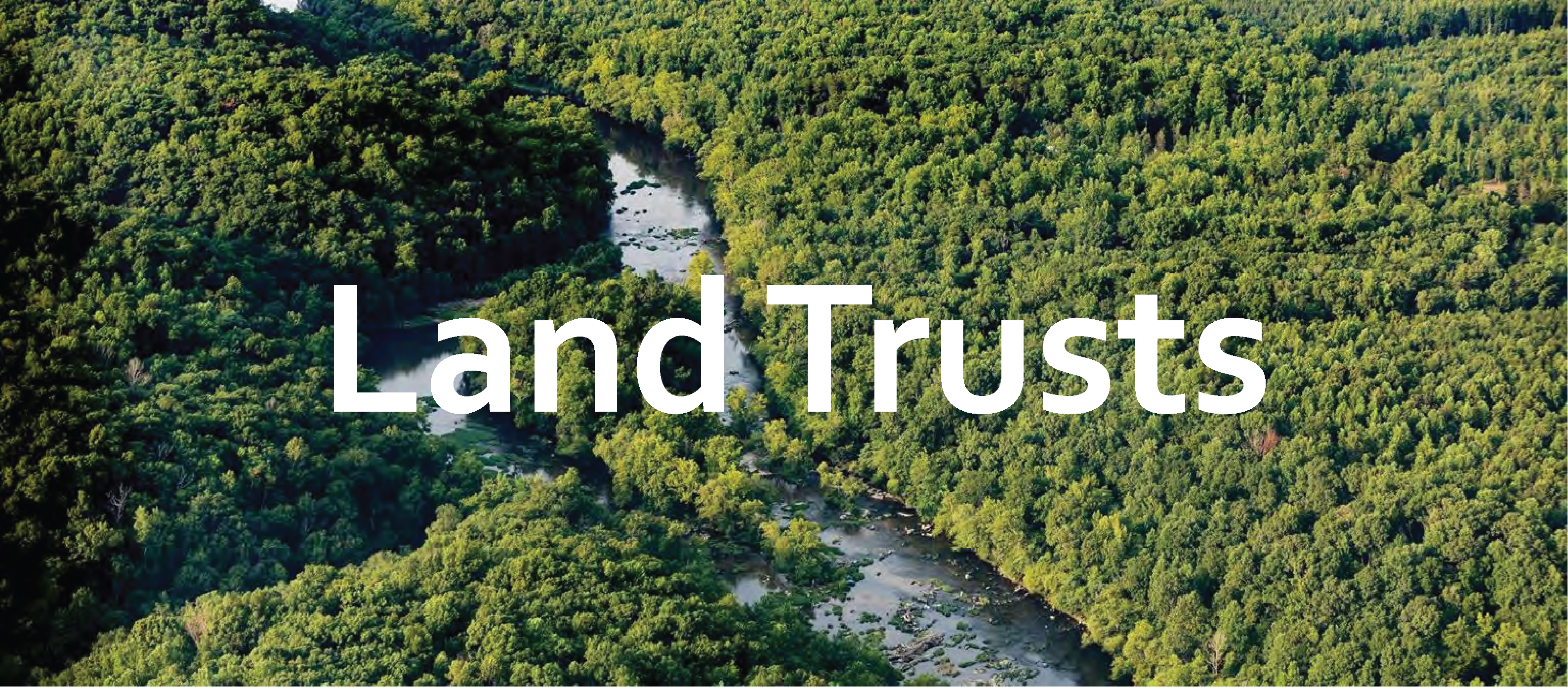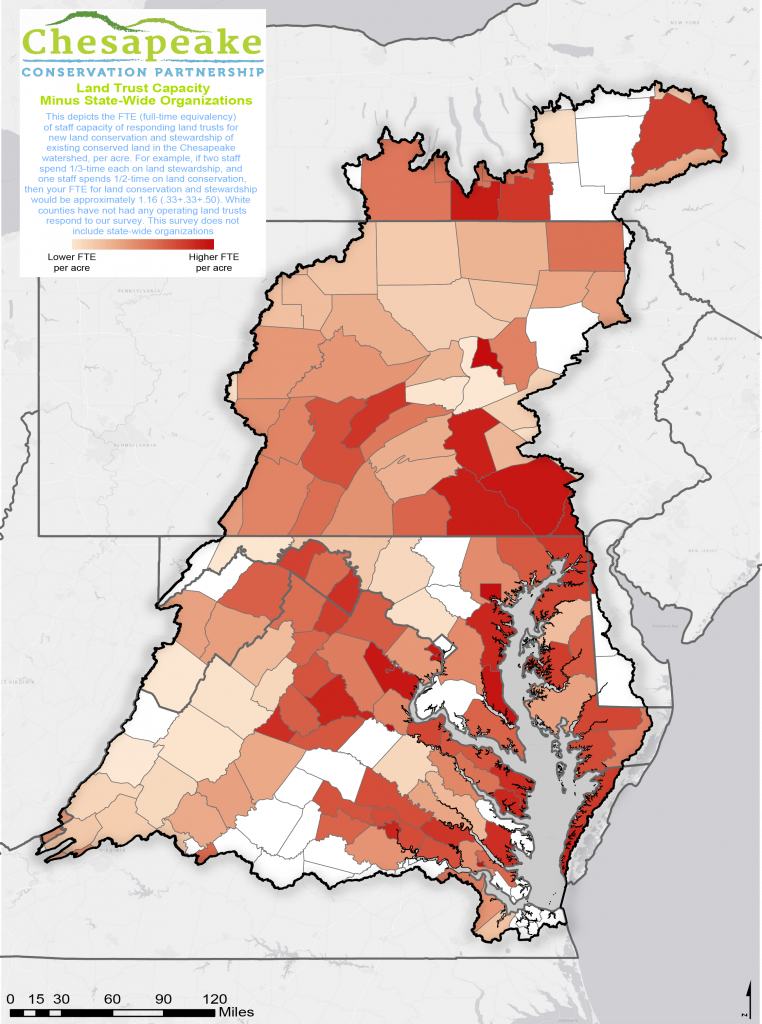The land trust community has been protecting land for multiple values for decades. Today, some 100 regional, state, and local land trusts operate in the Chesapeake Bay watershed, collectively protecting more than 1.8 million acres of land.
Many land trusts have significant capacity to protect more important lands in the future. The additional capacity of strategic, national land conservation
partners can help accelerate conservation in areas of shared interest.
How can we get a picture of where regional and local land trust capacity is currently concentrated in the watershed? Where do land trusts focus their work within their service areas? How does staff time directly translate to capacity for conservation? Where in the watershed is the land trust community interested in continuing or expanding conservation efforts?
This map illustrates land trust staff capacity based on defined service areas of land trusts at the county level. The map uses land trust staff size (in FTEs) dedicated specifically to new land conservation and to stewardship of existing conserved land as an indicator of capacity—expressed as a “heat map” of areas of relatively greater or lesser capacity.
Note that only land trusts with at least one staff person (at approx. .5 FTE or more) were surveyed. While this likely captures the majority of capacity, it does not capture all of it. Volunteers, distinct from dedicated staff capacity, also play a significant role in the leadership of all-volunteer land trusts and the long-term stewardship of conserved lands.
Tthese maps also do not include capacity provided by major national organizations such as The Conservation Fund, The Nature Conservancy, Trust for Public Land and others.
For more information and to explore the map featured below further, please visit https://www.landscope.org/chesapeake/chesapeake_map_layers/reference/chpk_LandTrustCapacity/27794/


